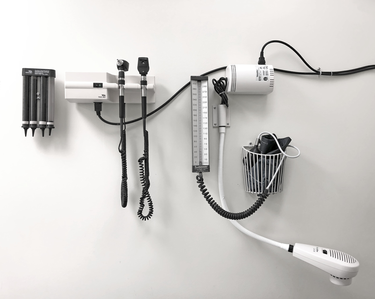
Medical malpractice is established when two criteria are met: a health care provider must have violated a professional standard of care, and an injury must have occurred as a result.
More than one-third, or 34%, of American physicians have been sued over allegations of medical malpractice, according to a 2016 American Medical Association survey, and nearly half of those (16.8%) have faced two or more lawsuits. 32% of malpractice suits related to medication involve patient death, and 18% (nearly 1 in 5) of all other cases do.
This article lists medical malpractice statistics, including common errors, prescription and surgical errors, claims by practitioner, and malpractice by state.
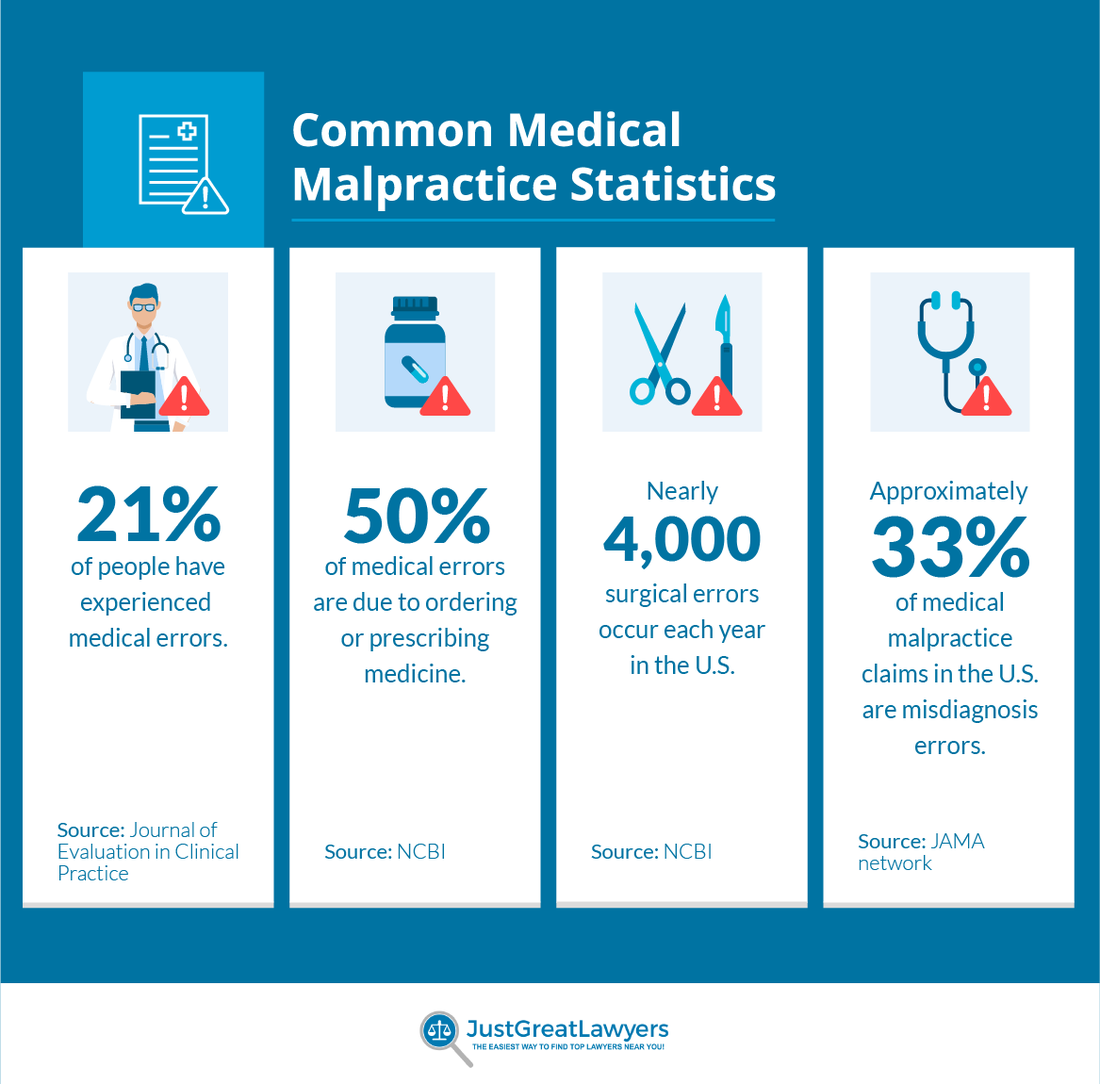
There are a number of ways medical malpractice can occur. It can happen in surgery, or through misdiagnosis, overprescription, wrongful prescription evaluations, poor aftercare, poor health management, premature discharge, failure to order the proper tests, and other means. It occurs when a health care provider causes injury to a patient through an act of medical negligence or omission.
If you believe you may have been injured as a result of this or other negligent action on the part of a physician, hospital, or other healthcare professionals, research your situation and contact a medical malpractice lawyer to help you determine your next steps.
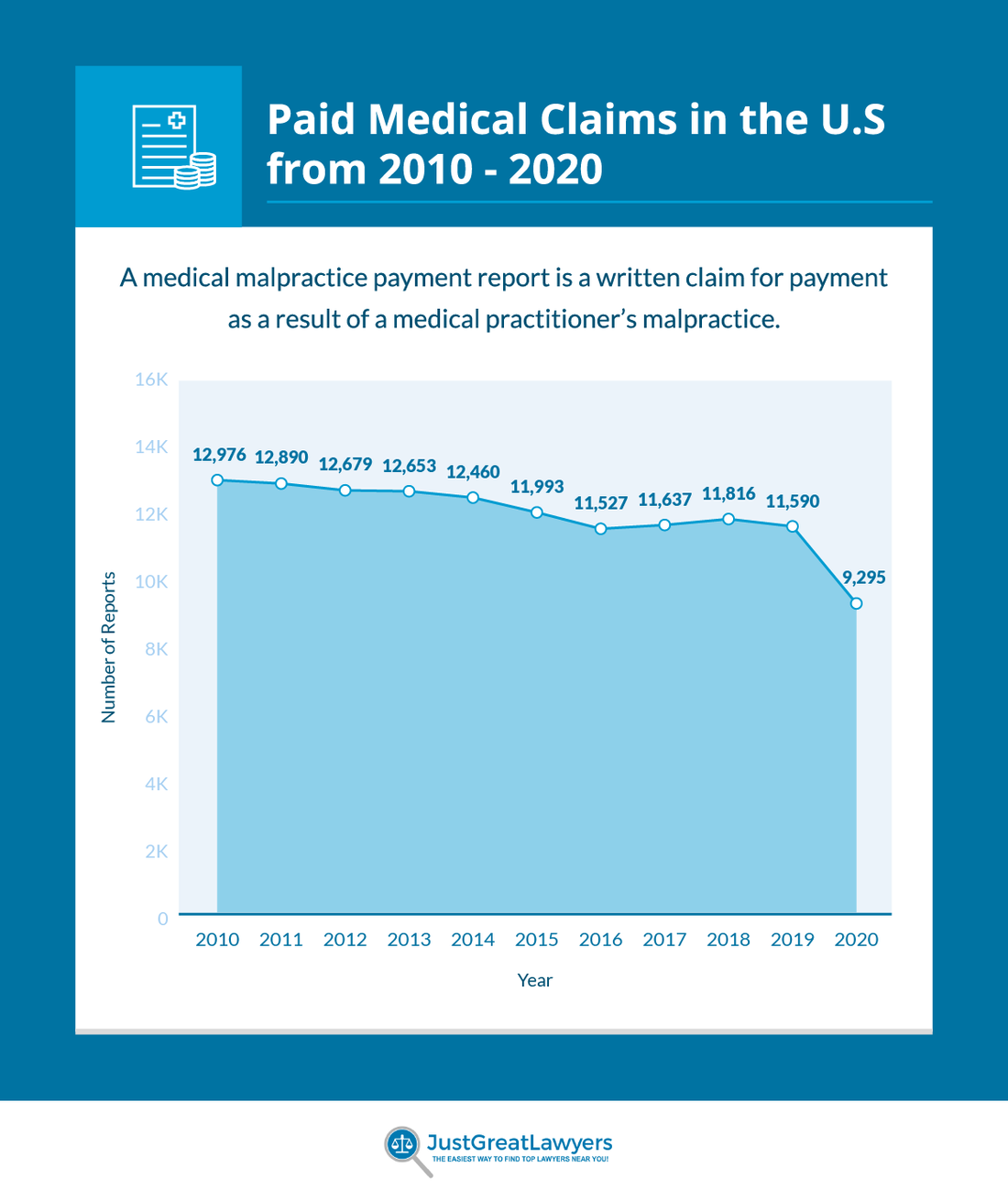
It’s important to know where you stand because different cases have varying chances of success.
In 2015, 68% of claims were withdrawn, dismissed, or dropped.
Just 7% of claims ended up in court, and in 88% of the verdicts, the defendant prevailed.
When it comes to medical malpractice payments, 96.5% were the result of settlements in 2018, with total payouts coming to $3.9 billion.
The 3.5% of payments resulting from judgments led to $142.6 million in total awards.
Medical malpractice payouts were largest in cases where plaintiffs had become quadriplegic or brain-damaged, or required lifelong care, averaging $961,185.
Major permanent injury cases resulted in an average payment of more than $610,000, followed by significant permanent injury at $450,000, and wrongful death at more than $386,000.
A medical malpractice payout for an insignificant injury averaged slightly more than $40,000.
Payment amounts were greatest for those in the 50-59 age group and were also greater for females at 55.5% of the amount paid compared to 44.2% for males.
If you have been the victim of medical malpractice, you are not alone. Following are some statistics that show just how often medical malpractice occurs in the United States:
10% of all deaths in the United States are the result of medical error.
$2.16 billion in medical malpractice claims were filed by members of the armed services in 2019.
5% to 10% of all physicians have had sexual contact with patients.
68 liability claims have been filed per 100 physicians.
49.2% of physicians age 55 and older have been sued.
39.4% of male physicians have been sued.
22.8% of female physicians have been sued.
About 15,000 to 18,000 lawsuits are filed each year alleging medical malpractice or negligence.
More than 30% of physicians pay more than $10,000 for medical malpractice insurance annually.
16% of psychiatrists have been sued, the lowest of any specialty.
It’s a common perception that most medical malpractice claims are filed against physicians, but in fact, this is not the case. MDs actually accounted for the second-highest number of claims in 2020, at nearly 12,000, but more claims were filed against registered nurses — more than 13,000.
When the figures are combined for registered nurses and practical, or vocational, nurses, along with nursing paraprofessionals, the total is far higher than it is for physicians, at about 22,700.
Other categories for which malpractice claims have been filed include technicians/medical assistants, therapists, dentists, pharmacists, and social workers.
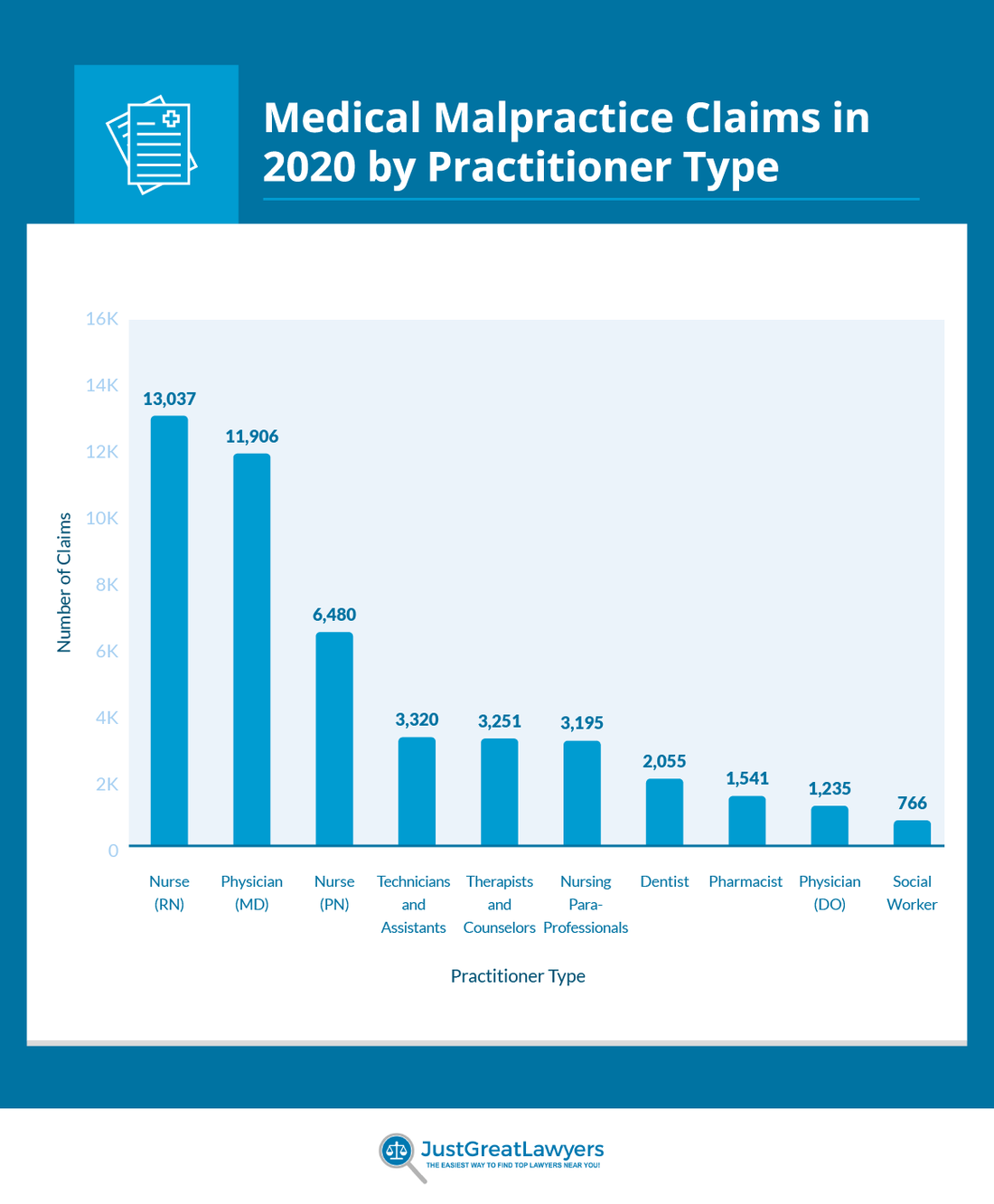
An improper diagnosis can lead to conditions going untreated.
Misdiagnosis was the leading cause of medical malpractice allegations in 2014, accounting for 33% of the cases, and more than 100,000 Americans are estimated to die or be permanently disabled every year due to misdiagnosis. The leading diagnostic errors that lead to death or permanent disability were:
Misdiagnosed cancer, 37.8%
Vascular events, 22.8%
Infections, 13.5%
More specifically, diagnostic problems were most likely to be noted in cases of lung cancer, stroke, and sepsis. Other conditions prone to misdiagnosis include pneumonia, heart disease, blood clots in the lungs and legs, meningitis, and skin, breast, and prostate cancer.
Among primary care physicians, the three diagnoses that were missed most frequently were meningitis, heart attack, and cancer.
Misdiagnosis may be involved in between 40,000 and 80,000 hospital deaths each year, and may be implicated in between 80,000 and 160,000 cases of serious harm to people’s health. The largest number of misdiagnoses are the result of clinical judgment failures.
The Mayo Clinic estimates that nearly 70% of Americans take at least one prescription drug, and more than half take two.
Unfortunately, errors regarding prescriptions are relatively common. Improper dosages and interactions with other drugs a patient is taking can cause adverse effects. Sometimes, a pharmacist fills a prescription incorrectly or misreads a doctor’s handwriting. A lot of things can happen.
Yet, nearly 85% of the physicians who took part in a Johns Hopkins survey cited fear of malpractice actions as the reason for overtreating patients.
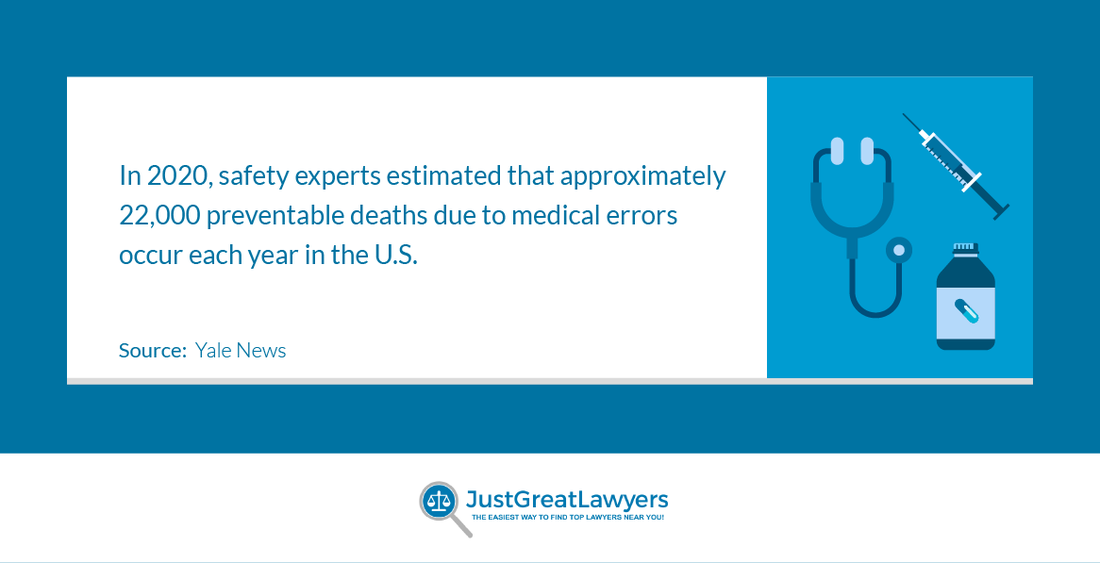
The highest number of medical malpractice claims related to hospital care involves surgical errors. Surgical problems can take several different forms. They include surgical site infections, surgical injury, unnecessary surgery, and wrong-site surgical procedures.
More than 200 million surgical procedures are performed each year globally, and at least 4,000 surgical errors take place every year in the United States.
General surgeons are also sued at a high rate: 63% have had a claim filed against them, and half have been sued two or more times.
40% of physicians say the volume of their monthly patient care can lead to errors. The average general surgeon works 50 to 60 hours a week, not counting the time they are available to be called in.
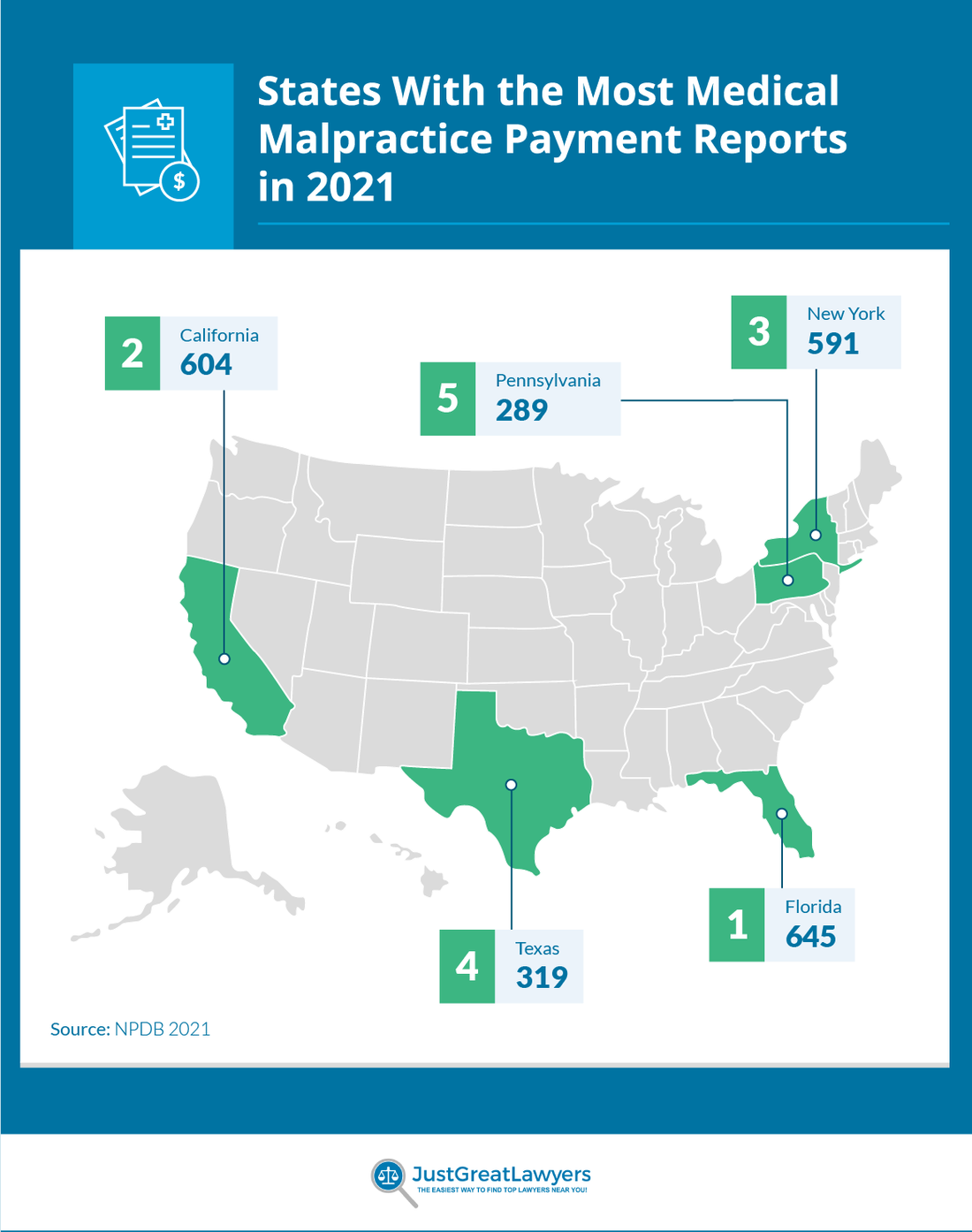
Medical malpractice costs per capita were highest in the Northeast, with New York leading the way.
From 2012 to 2016, New Jersey, Pennsylvania, Massachusetts, and Rhode Island rounded out the top five, followed by New Hampshire and Connecticut.
Vermont was near the bottom of the list at No. 46. Wisconsin had the lowest cost, with North Dakota second-lowest, Texas third, and North Carolina fourth.
From 1990 to 2021 New York generated 62,515 medical malpractice payment reports.
Compare that to California — a state with more than twice as many people (39.6 million vs. 19.3 million) — which had a total of 53,286 malpractice payment reports.
Texas, the second-most populous state with 29.7 million people, had just 28,682.
Florida, with the third-highest population at 21.9 million, had 36,291.
Wisconsin’s total was a mere 3,586.
In 2019, New York recorded $685 million in total payments, according to figures from the National Practitioner Data Bank. That was nearly double second-place Pennsylvania, which checked in at just over $369 million.
North Dakota ranked last with a total of $675,300.
Alaska had a relatively low total of around $13.8 million, but because of its small population, it ranked third per capita with an average payout of $656,429, behind Maine ($872,879) and Massachusetts ($692,976), and slightly ahead of Minnesota’s $653,530.
The average malpractice payment nationwide in 2018 was $348,065.
Medical malpractice lawsuits are a fact of life in the United States. Medical mistakes come in many forms, involving mistakes made during surgery, errors in prescriptions, and faulty diagnoses, among other things. A missed cancer diagnosis or a failure to recognize heart disease can be the difference between life and death.
The results can be minor or catastrophic, leading to lifelong disability or even death.
If you believe you or a loved one have been the victim of medical malpractice, consider contacting a law firm and discussing your situation with a trained legal professional familiar with medical malpractice cases. Many medical malpractice attorneys provide free consultations.
